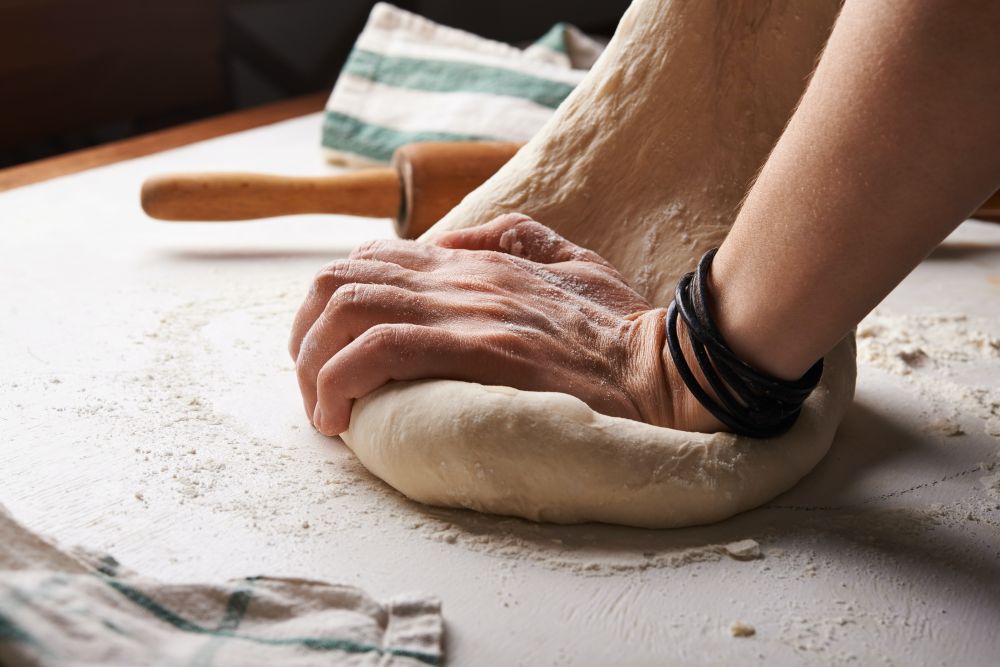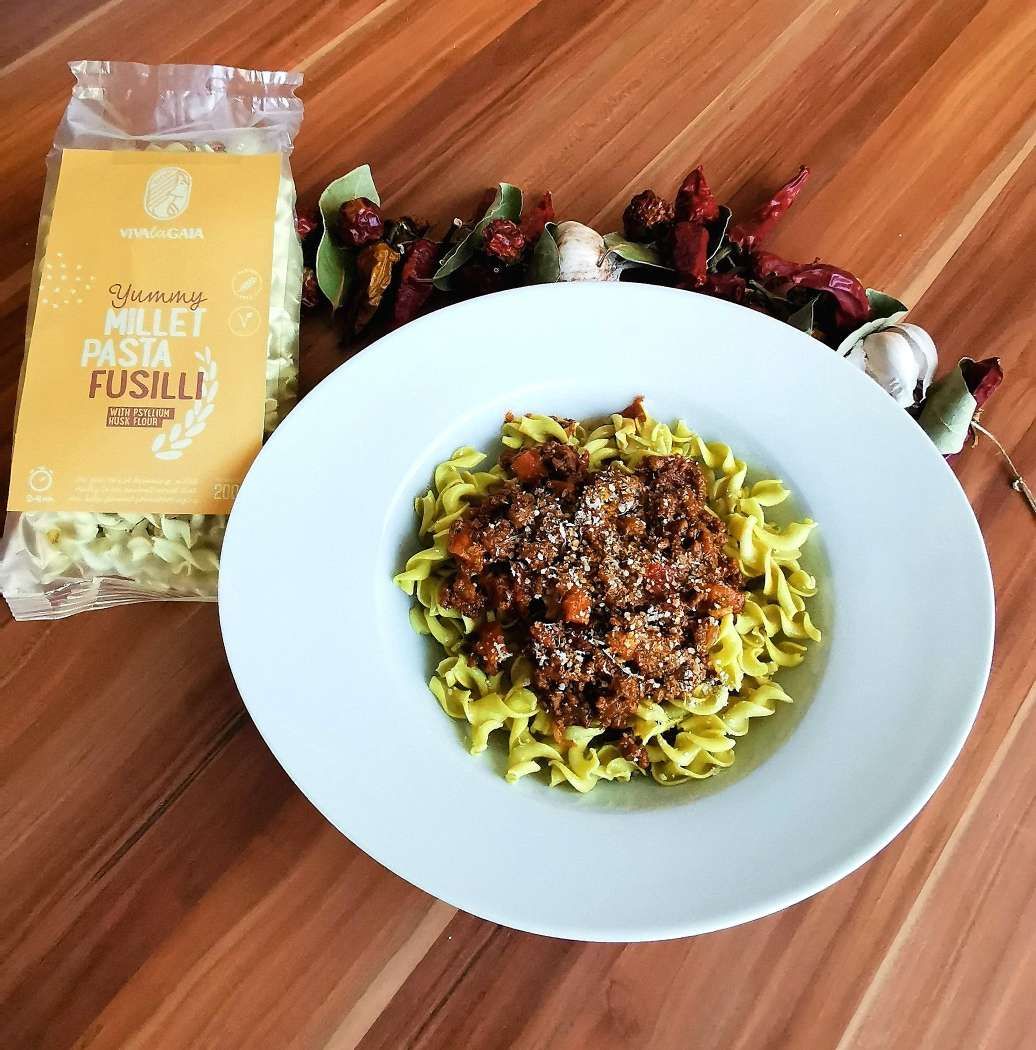The following paragraphs will highlight the key role of gluten as the wheat protein behind the viscoelastic properties of dough. Although gluten is harmless to most people there is a lot of interest for gluten-free alternatives have emerged. Let's shed some light on these questions!
Gluten is a wheat protein responsible for the viscoelastic properties of dough.
Gluten is a group of proteins found in certain cereals, mainly wheat, barley, rye and their derivatives. It is made up of two main proteins: gliadin and glutenin. These proteins belong to the prolamin and glutenin families. Gliadin is responsible for the extension of the dough, while glutenin gives it elasticity. The combination of gliadin and glutenin forms a three-dimensional protein network in the presence of water. This network gives wheat-based dough its characteristic viscoelastic properties (elasticity and stickiness), allowing it to be shaped, risen and transformed into various baked goods. When gluten binds with water, it forms a complex network that allows the dough to trap the gas produced by the yeast during fermentation, allowing bread and other bakery products to rise.

Handmade dough preparation.
Gluten is a staple food and is usually harmless.
It's important to note that gluten is harmless to the vast majority of people. It is specific to wheat and related grains such as barley and rye. These grains are a staple in many diets and can be found in various foods, including bread, pasta, cereals and baked goods.

Dough preparation
There are a number of gluten-free alternatives that are just as full of energy and contain even more nutrients.
As awareness of celiac disease and gluten sensitivity has increased, many gluten-free alternatives and products have become available for people who need to avoid gluten. These alternatives use grains such as millet, rice, corn, quinoa and gluten-free oats, which do not contain gluten. It is important to note that oats can be contaminated with gluten if they are grown near gluten-containing grains or processed in facilities that also handle wheat, barley or rye.

Rice as a source of gluten-free food
In short, gluten, a wheat protein, imparts viscoelastic properties to dough through the interplay of gliadin and glutenin proteins, forming a water-induced network that gives wheat-based dough its elasticity and stickiness. While gluten is a staple and benign to most, specifically associated with wheat, barley and rye, it's crucial to a variety of foods. However, as awareness of celiac disease and gluten sensitivity grows, gluten-free alternatives rich in energy and nutrients have emerged, using grains such as rice, quinoa and gluten-free oats to cater for those who need to avoid gluten.
Try Viva la Gaia!
Try our gluten-free pasta, corn gofio, psyllium fibre and flax seed that we have prepared for you in our Viva la Gaia online store.
Categories
Products
Celtic Sea Salt Fine Dry
- Popular finishing salt in cooking and baking!
- A unique, light grey colour and characteristic taste!
- Moist and crumbly texture!
- Containing more than 80 trace minerals!
- Traditionally harvested from the coastal regions of Brittany!
- Fine salt
Uncover Celtic mystery. "Sel de Guerande" - traditionally harvested salt from Brittany, France.Try our celtic sea salt...
Gummies Turmeric and Ginger
- Natural source of antioxidants and anti-inflammatory substances.
- Natural botanical extracts traditionally used to support skin, joint and gut health.
- Satisfy your taste buds and reap the myriad benefits of turmeric and ginger.
- Suitable for vegans.
- Excellent peach taste, without artificial flavours and colours.
Indulge in a burst of flavour and wellness with gummies that contain 495 mg of turmeric and 250 mg of ginger per serving. Try it, whether you are men or woman.Oh, yes. Try it yourself. Content/Usage: 60 gummies/1 per day
Hawaii Salt Alea Gold Red
- Premium quality salt!
- Unique and rich flavor!
- High in mineral content (from the volcanic soil)!
- For the final touch of culinary masterpieces!
- Only for true gourmets!
Discover how wild tastes like. Extracted from the coast of the Pacific Ocean and mixed with iron-rich volcanic red Alaea earth, which gives the salt its red colour.Try our mystical red clay salt...
Hawaii Salt Lava Black
- Premium quality salt!
- Unique and rich flavor!
- High in mineral content (from the volcanic soil)!
- For the final touch of culinary masterpieces!
- Only for true gourmets!
Our special salt from Hawaii. Extracted from the coast of the Pacific Ocean and mixed with pure activated carbon from lava rocks.Hm, is this the magical dust of Earth?
Himalayan Crystal Salt Pink Fine
- A unique and rich flavour - a result of the high mineral content!
- Distinctive pink colour due to the presence of iron, magnesium, and trace minerals!
- Precious salt used as a finishing salt!
- Popular in cooking and baking
- Fine salt
Bring sacredness into your home. The salt of the salts from Tibetan high plains!Try our Himalayan Crystal pink salt.
Himalayan Crystal Salt Pink Granulate
- A unique and rich flavour - a result of the high mineral content!
- Distinctive pink colour due to the presence of iron, magnesium, and trace minerals!
- Precious salt, used as a finishing salt!
- Popular in cooking and baking
- Granulated salt
Bring sacredness into your home. The salt of the salts from Tibetan high plains!Try our Himalayan Crystal pink salt.
Is there a difference between refined table salt and unrefined salt?
SCRUB STRAWBERRY
- Effective, moisturizing, cleaning, and nourishing
- An eco-friendly alternative to liquid body and hair care products!
- A natural and sustainable option for body care cosmetics!
- A travel-friendly option – no spill, no leak, less space needed!
- Long-lasting, money-saving option!
Only a true diva can dream up such a fabulous fruit whose seeds help fight cellulite.Discover pure prestige!



























